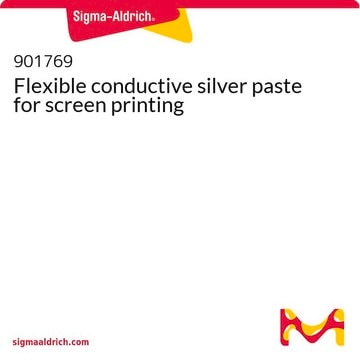200689
Ethyl cellulose
viscosity 10 cP, 5 % in toluene/ethanol 80:20(lit.), extent of labeling: 48% ethoxyl
Synonym(s):
ethylcellulose
Sign Into View Organizational & Contract Pricing
All Photos(3)
About This Item
Recommended Products
form
powder
autoignition temp.
698 °F
extent of labeling
48% ethoxyl
refractive index
n20/D 1.47 (lit.)
viscosity
10 cP, 5 % in toluene/ethanol 80:20(lit.)
transition temp
softening point 155 °C
density
1.14 g/mL at 25 °C (lit.)
Looking for similar products? Visit Product Comparison Guide
General description
Ethyl cellulose(EC) is a hydrophobic andphysiologically inert cellulose derivative. It is widely used to preparephysiological dosage forms. It can also be used as a polymer coating,particle emulsion stabilizer and in pharmaceuticallyuseful aqueous latex dispersions.
Application
Ethyl cellulose can be used as a starting material to prepare zein-based nanofibers for controlled drug release. The addition of EC improves the solubility and mechanical properties of the composite nanofibers.
It can be used to prepare graphene-based ink for inkjet printing. This graphene oxide ink printed onto ITO surfaces can be used as an electrode for label-free DNA sensing.
Owing to its unique features such as gastroresistance, biocompatibility, and degradation to non-toxic and readily excreted products, EC is widely used in oral and topical drug dosage forms for the controlled release of the drug.
It can be used to prepare graphene-based ink for inkjet printing. This graphene oxide ink printed onto ITO surfaces can be used as an electrode for label-free DNA sensing.
Owing to its unique features such as gastroresistance, biocompatibility, and degradation to non-toxic and readily excreted products, EC is widely used in oral and topical drug dosage forms for the controlled release of the drug.
Features and Benefits
- Non-toxic
- Stable
- Compressible
Storage Class Code
11 - Combustible Solids
WGK
WGK 1
Flash Point(F)
Not applicable
Flash Point(C)
Not applicable
Personal Protective Equipment
dust mask type N95 (US), Eyeshields, Gloves
Certificates of Analysis (COA)
Search for Certificates of Analysis (COA) by entering the products Lot/Batch Number. Lot and Batch Numbers can be found on a product’s label following the words ‘Lot’ or ‘Batch’.
Already Own This Product?
Find documentation for the products that you have recently purchased in the Document Library.
Customers Also Viewed
Arif Z Nelson et al.
Proceedings of the National Academy of Sciences of the United States of America, 117(11), 5671-5679 (2020-03-05)
Microfluidic tools and techniques for manipulating fluid droplets have become core to many scientific and technological fields. Despite the plethora of existing approaches to fluidic manipulation, non-Newtonian fluid phenomena are rarely taken advantage of. Here we introduce embedded droplet printing-a
Daniela Traini et al.
International journal of pharmaceutics, 438(1-2), 150-159 (2012-09-12)
The potential of excipient coating to enhance aerosol performance of micronized drugs in carrier excipient-drug blends, used in dry powder inhalers, was investigated. Both EC (ethyl cellulose) and PVP (polyvinylpyrrolidone) were used as coating agents. Carriers were prepared via sieve
N Suwannateep et al.
European journal of pharmaceutics and biopharmaceutics : official journal of Arbeitsgemeinschaft fur Pharmazeutische Verfahrenstechnik e.V, 82(3), 485-490 (2012-09-08)
The phytochemical curcumin possesses antioxidant activity; however, it becomes unstable after being exposed to light or heat or loses activity during storage. This is especially important when curcumin is applied to the skin within a cosmetic or pharmaceutical formulation, since
Helene Andersson et al.
European journal of pharmaceutical sciences : official journal of the European Federation for Pharmaceutical Sciences, 48(1-2), 240-248 (2012-11-20)
Films of ethyl cellulose (EC) and water-soluble hydroxypropyl cellulose (HPC) can be used for extended release coatings in oral formulations. The permeability and microstructure of free EC/HPC films with 30% w/w HPC were studied to investigate effects of EC molecular
Tetsuya Ozeki et al.
Biological & pharmaceutical bulletin, 35(11), 1926-1931 (2012-11-06)
Production of drug nanoparticles is an effective strategy to enhance solubility and oral absorption of water-insoluble drugs. The handling of drug nanoparticles has been an important issue in drug formulation because nanoparticles easily aggregate each other and redispersion of these
Our team of scientists has experience in all areas of research including Life Science, Material Science, Chemical Synthesis, Chromatography, Analytical and many others.
Contact Technical Service






